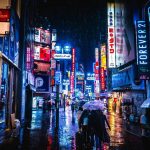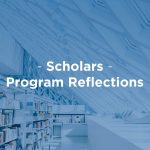Rose Fellowship San Francisco Bay Area Study Tour Travelogue
Members of the 2013-2014 class of Daniel Rose Fellows — leaders from the cities of Honolulu, Indianapolis, Ind., Memphis, Tenn. and Portland, Ore. — traveled to the San Francisco Bay Area in December. The fellows traveled on foot and via mass transit for two-and-a-half days, meeting with public planning and development officials as well as private and nonprofit developers and policy advocates, getting a firsthand, intensive introduction to the land use challenges of the San Francisco Bay Area.
On the first day of the program, the fellows boarded the F-Market & Wharves line of historic streetcars, operated by the San Francisco Municipal Transportation Agency—better known as Muni—en route to the City of San Francisco Planning Department. The vintage, 1930s-era streetcars, purchased by the city in the 1980s, began full-time revenue service in 1995. This one (above) is painted in the green, cream and red livery of the Philadelphia Transportation Company.
Arriving at the San Francisco Planning Department, the fellows met with Director John Rahaim as well as planners Lisa Chen and Steve Wertheim, who placed the city’s ongoing challenges in a regional and global context. “The work we’re doing today is more detailed and more robust than it’s ever been … also more challenging because of the growth and politics that are happening right now,” Rahaim said. “The interest of large companies to take large chunks of space is coming, for the first time in a long time.” Wertheim described an intensive environmental review and permitting process that involved over 40 full-time staff.
The fellows then headed out into the city, where Senior Community Development Planner Kearstin Dischinger pointed out ongoing development in the footprint of the former Central Freeway, where the highly-controversial Octavia Boulevard opened in 2005 after the expressway was removed. The narrowed right-of-way freed up a succession of spaces which host street art and urban gardens as placeholders while development awaits.
Then they climbed to the top of 100 Van Ness Avenue, a 1974 office building being converted to apartments by Emerald Fund. Everyone was impressed with the 360-degree view. “Normally, when you’re in a tall building, you’re in a tall building district,” said Marc Babsin of Emerald Fund. “Here, there are views all around.” Babsin explained how the building is a nonconforming structure well in excess of a city height restriction. As such, any increase to the building’s height or area—even the addition of balconies—is prohibited. Instead, his firm removed a mechanical penthouse at the top of the building and is replacing it with a rooftop deck and playground for future residents.
The Study Tour stopped in front of Twitter’s new corporate headquarters on Market Street, where Project Manager Marlo Isaac led a discussion on tax breaks, gentrification, and the corporation’s move to the city.
Back on Market Street, City Design Group Manager Neil Hrushowy described the ongoing Better Market Street project to turn the thoroughfare into a vibrant public space. Among other streetscape improvements, Hrushowy demonstrated “Whispering Dishes,” a sidewalk exhibit by the Exploratorium that projects quiet conversation to another dish located across the busy pedestrian thoroughfare. “About 15 years ago the city came through and scraped all the public seating,” said Hrushowy, resulting in a Market Street that he says had been “monolithic” and “dead” in its function as a public space. “Someone was afraid of homeless people sleeping on the benches,” Hrushowy says. “Once the benches were gone, did all the homeless people suddenly go and find homes? No — there’s no connection between public seating and homelessness. Now, we’re working to activate these spaces, to bring the street life back.”
At SPUR, a think tank and planning advocacy organization, the Fellows studied the ever-expanding role of independent policy analysis in regional planning and development efforts. While the century-old organization originally focused on San Francisco, it recently expanded its focus to include the entire region.
“Our values are stopping sprawl and concentrating growth in cities—and then making those cities as great as they can be,” said Sarah Karlinsky, the organization’s deputy director. “People try to put organizations like ours into a category, and that doesn’t work for SPUR,” said Egon Terplan, SUPR’s regional planning director. “Sometimes we come up with a position that might surprise someone.”
After taking the BART train across across the San Francisco Bay Bridge, the Study Tour witnessed the legacy of a “Rose Center Success Story” in Oakland, where the 2011-2012 class of Daniel Rose Fellows worked to redefine the city’s Broadway corridor. Prior to a tour of Latham Square and Broadway Avenue, the 2013-2014 class was greeted at Oakland City Hall by the city’s four alumni fellows: Mayor Jean Quan, Aliza Gallo of the Office of Economic and Workforce Development, Director Gregory Hunter of the Office of Neighborhood Development and City Administrator Deanna Sentana.
“We’ve seen a lot of economic cycles go through the nation, but there has always been a sense in Oakland that we weren’t able to capitalize on the economic prosperity of the region,” said Hunter. But that has changed. “We’ve seen a lot of economic development in the last few years — it’s not something we take for granted. We’ve had more than 50 new developments open up downtown, most of them restaurants or entertainment. Our industrial vacancy rate is the lowest ever.”
Back across the bay, Rose Center Executive Director Jess Zimbabwe concluded the day with two walking tours: At the San Francisco Ferry Building, Zimbabwe discussed how the barrier of the Embarcadero Freeway had caused the iconic structure to turn its back on the street. Now, the elevated expressway is gone and the building houses a bustling marketplace — even as it continues to serve as a transit terminal.



